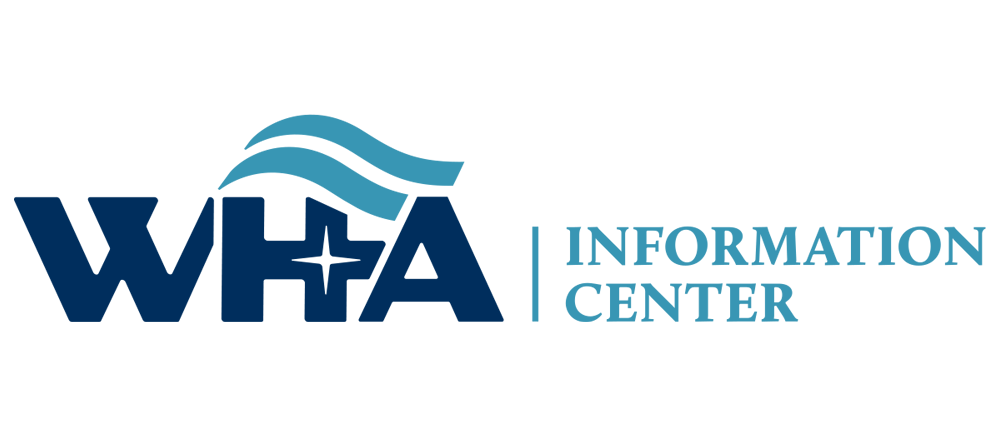Click here to view past issues
IN THIS ISSUE
- WHA to Host Briefing for Hospitals and Health Systems on Wisconsin’s Application for $1 Billion in Rural Health Transformation Funding
- President Trump Signs Funding Package to Re-Open Government After Longest Shutdown
- WI Assembly Committee on Health, Aging and Long-Term Care Holds Hearing on WHA-Supported Next-of-Kin Legislation as Senate Committee Advances Companion Legislation
- WHA Foundation, Hospitals Connect Local Schools with Grants for Future Health Care Workforce
- Strong Support Expressed for BON’s Work to Create an Expanded Faculty Role for BSNs
- WHA Urges Caution as DHS Embarks on Review of Wisconsin Trauma Designation Standards
- DWD Health Care Sector Grant Funding Opportunity Now Open
- Wisconsin Hospitals State PAC & Conduit Update
- Don’t miss out! WHA Quality and Patient Safety Awards Applications Due Nov. 21
- Effectively Navigating Difficult Conversations & Conflict - Register Today for WHA’s Health Care Leadership Academy
- Hospital Board Education, Keeping Your Board Apprised and Legally Compliant, a Success
- Ascension Awarded WHA 2025 Global Vision Community Partnership Award
- Fast Facts from the WHA Information Center: November is Lung Cancer Awareness Month
EDUCATION EVENTS
Dec. 16, 2025
Common Hospital DeficienciesJan. 14, 2026
Caring for Wisconsin’s Caregivers Well-Being First Champion Challenge for Credentialing KickoffJan. 28, 2026
2026 WHA Health Care Leadership AcademyClick here to view education event calendar
View more issues of The Valued Voice
Sign Up for WHA's Newsletter
Fast Facts from the WHA Information Center: November is Lung Cancer Awareness Month
 Lung cancer is the deadliest form of cancer, killing more people than breast, colon and prostate cancer combined. November is Lung Cancer Awareness Month to help spread the word and educate people on lung cancer.
Lung cancer is the deadliest form of cancer, killing more people than breast, colon and prostate cancer combined. November is Lung Cancer Awareness Month to help spread the word and educate people on lung cancer.
The American Cancer Society finds that the chance of men being diagnosed with lung cancer in their lifetime is 1 in 17 and for women, 1 in 18. According to the Centers for Disease Control and Prevention (CDC), lung cancer is the third most diagnosed cancer in both men and women in the United States. In 2022, the U.S. reported over 218,800 new cases of lung cancer.

The WHA Information Center analyzed all lung cancer diagnosis claims from January 2023 through June 2025. In this timeframe, 2024 Q4 held the highest visits for lung cancer at roughly 16,500 visits. The number of visits was higher in females than males. The CDC finds that nationally, males have higher rates of being diagnosed with lung cancer than females. The highest age group of lung cancer visits is 66-70 years old with the median age being 70, which aligns with the national median age. The Wisconsin county with the highest number of visits is Milwaukee County.
Lung cancer rates have been decreasing nationally the past few years for two main reasons: fewer people smoke cigarettes today than in past and lung cancer treatments have improved. Smoking cigarettes is still the number one cause of lung cancer, but other tobacco products such as pipes or cigars still have a large impact on the lungs. Other risk factors of lung cancer include having a family history, breathing in secondhand smoke and being exposed to substances such as radon or asbestos.
The CDC recommendations for helping lower lung cancer risk are:
- Implementing tobacco control programs to help prevent and reduce tobacco use
- Community preventive services task forces that help people quit using tobacco, prevent minors from using and avoid exposure to secondhand smoke
- Introducing evidence-based cancer control programs to encourage people to be screened for lung cancer
Fast Facts from the WHA Information Center: November is Lung Cancer Awareness Month
 Lung cancer is the deadliest form of cancer, killing more people than breast, colon and prostate cancer combined. November is Lung Cancer Awareness Month to help spread the word and educate people on lung cancer.
Lung cancer is the deadliest form of cancer, killing more people than breast, colon and prostate cancer combined. November is Lung Cancer Awareness Month to help spread the word and educate people on lung cancer.
The American Cancer Society finds that the chance of men being diagnosed with lung cancer in their lifetime is 1 in 17 and for women, 1 in 18. According to the Centers for Disease Control and Prevention (CDC), lung cancer is the third most diagnosed cancer in both men and women in the United States. In 2022, the U.S. reported over 218,800 new cases of lung cancer.

The WHA Information Center analyzed all lung cancer diagnosis claims from January 2023 through June 2025. In this timeframe, 2024 Q4 held the highest visits for lung cancer at roughly 16,500 visits. The number of visits was higher in females than males. The CDC finds that nationally, males have higher rates of being diagnosed with lung cancer than females. The highest age group of lung cancer visits is 66-70 years old with the median age being 70, which aligns with the national median age. The Wisconsin county with the highest number of visits is Milwaukee County.
Lung cancer rates have been decreasing nationally the past few years for two main reasons: fewer people smoke cigarettes today than in past and lung cancer treatments have improved. Smoking cigarettes is still the number one cause of lung cancer, but other tobacco products such as pipes or cigars still have a large impact on the lungs. Other risk factors of lung cancer include having a family history, breathing in secondhand smoke and being exposed to substances such as radon or asbestos.
The CDC recommendations for helping lower lung cancer risk are:
- Implementing tobacco control programs to help prevent and reduce tobacco use
- Community preventive services task forces that help people quit using tobacco, prevent minors from using and avoid exposure to secondhand smoke
- Introducing evidence-based cancer control programs to encourage people to be screened for lung cancer
IN THIS ISSUE
- WHA to Host Briefing for Hospitals and Health Systems on Wisconsin’s Application for $1 Billion in Rural Health Transformation Funding
- President Trump Signs Funding Package to Re-Open Government After Longest Shutdown
- WI Assembly Committee on Health, Aging and Long-Term Care Holds Hearing on WHA-Supported Next-of-Kin Legislation as Senate Committee Advances Companion Legislation
- WHA Foundation, Hospitals Connect Local Schools with Grants for Future Health Care Workforce
- Strong Support Expressed for BON’s Work to Create an Expanded Faculty Role for BSNs
- WHA Urges Caution as DHS Embarks on Review of Wisconsin Trauma Designation Standards
- DWD Health Care Sector Grant Funding Opportunity Now Open
- Wisconsin Hospitals State PAC & Conduit Update
- Don’t miss out! WHA Quality and Patient Safety Awards Applications Due Nov. 21
- Effectively Navigating Difficult Conversations & Conflict - Register Today for WHA’s Health Care Leadership Academy
- Hospital Board Education, Keeping Your Board Apprised and Legally Compliant, a Success
- Ascension Awarded WHA 2025 Global Vision Community Partnership Award
- Fast Facts from the WHA Information Center: November is Lung Cancer Awareness Month

